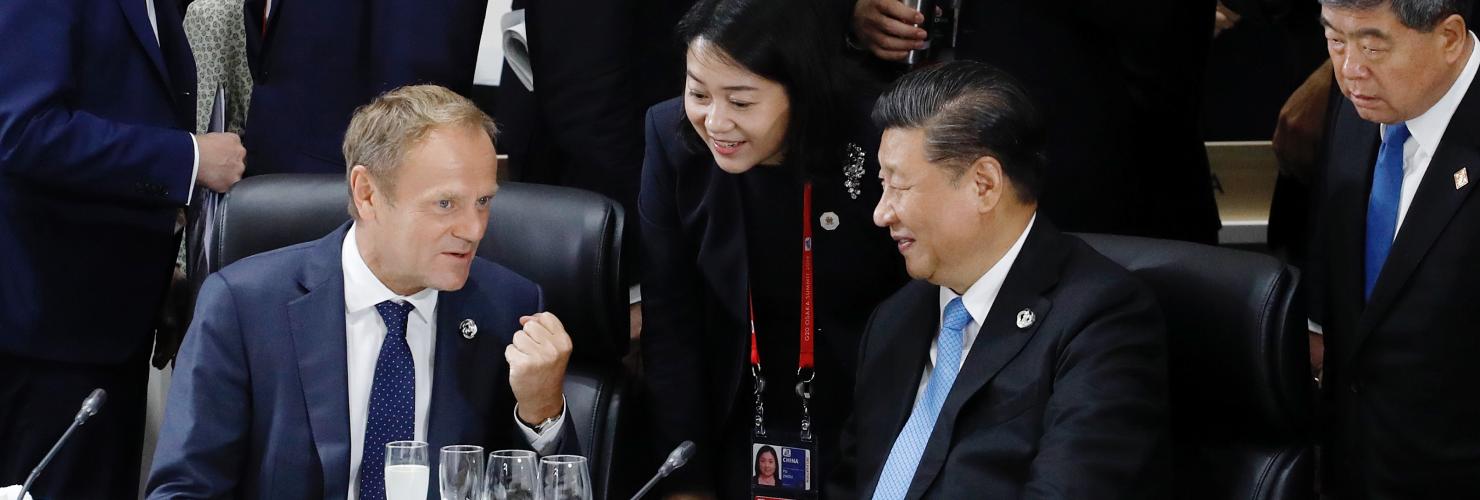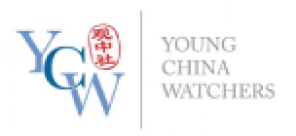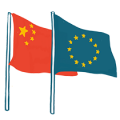

China as a dividing force in Europe
In March this year, Italy became the first G7 nation to sign an official MoU with China in the context of the Belt and Road Initiative (BRI). The move by the Italian government has been interpreted as a sign of increasing divisions within Europe over China. But to what extent might the Italian example be an indication of a shift or rift in EU-China relations?
Shifting perceptions of China
The situation is complex, pitting national interests against community interests within a shifting geopolitical environment. Even when there is a demonstration of unity in the EU, individual countries still diverge from common positions. For instance, in summer 2018, 27 EU ambassadors signed a statement criticizing BRI as mainly beneficial for China, lacking transparency and unsustainable in its debt policies, with Hungary being the only country to break ranks at the time.
News on EU-China relations is dominated by conflicts on specific issues such as trade disputes or human rights, which flare up from time to time. However, even though these have not substantially dampened the overall relationship, and EU-China trade and investment remains robust, the ways of engaging are changing and governments and businesses alike are struggling with the ambiguity of China. This is becoming particularly evident in Germany, China’s largest trade partner within Europe.
Since Donald Trump’s arrival to the Oval Office, the wider global context is shifting as well. With the ongoing trade dispute between the United States and China, China has been markedly stepping up its charm offensive towards Europe. China’s investment volumes are now nine-times higher in Europe than in North America due to fewer regulatory hurdles, a predictable policy environment, and high-tech assets, with the largest share going to the United Kingdom, Germany and France.
Public perceptions are also shifting. Historically, the United States has been the EU’s closest partner. Today, more and more Europeans feel they cannot rely on the United States anymore. A recent survey found that over 40 percent of Germans now place more trust in China than in the United States.
Caution around investments and advanced technologies
At the same time the conversation in government and business circles has markedly shifted towards increasing wariness towards China. Foreign companies operating in China are less willing to tolerate the continuing lack of reciprocity and discrimination and are tired of repeated promises of economic reforms and a level playing field in the Chinese market, without substantial changes being put into practice. At the same time, they are torn between taking a more critical stance and their reliance on the Chinese market. For instance, a recent paper by the Federation of German Industries (BDI) acknowledges China as one of the most important markets for German companies but emphasizes the challenge of reconciling partnership with systemic competition.
A similar picture is emerging on Chinese inbound investments in Europe. Voices are growing louder criticizing technology transfers and China’s growing clout in certain industries, such as electric vehicles, robotics and 5G technology, but the main question remains how to deal with the potential national security implications of Chinese participation in critical European infrastructure.
This spurred the EU and national governments into action, translating these concerns into legislation hindering, if not outright blocking, Chinese investments in certain sectors. On the initiative of Germany, France and Italy, the EU developed a regulation on how to approach investments into critical infrastructure. Still, the European investment screening framework is much less invasive and comprehensive than existing legislation in many countries (such as the more muscular Committee on Foreign Investment in the United States (CFIUS) mechanism) and does not have any legally binding nature.
The focus of the EU’s investment screening is clear: sharing information among Member States on specific foreign investments that have potential national security impacts. In addition, the European Commission may issue opinions when several Member States may be affected, or it may be in the interest of the EU as a whole. In such a case, Member States are required to justify any divergence from the Commission’s opinion.
While the EU approach addresses the cross-border nature of investments its remit remains limited to creating incentives for Member States to put in place robust foreign direct investment (FDI) monitoring mechanisms. Nevertheless, the first effects of a changing investment environment can already be felt: several Member States are modernizing and enhancing their FDI screening regimes in anticipation of Chinese takeovers.
After a record high for Chinese investments in Europe in 2016, Chinese-initiated mergers and acquisitions in Europe slowly declined in 2017, dropping by 21 percent in 2018; the number of investments in Germany even fell by 60 percent. Despite this dip, the debate around Chinese influence, technology, and potential national security implications continues unabated.
In focus: Europe’s 5G networks
Risks are perceived as particularly high when it comes to telecommunications, with 5G set to be the new standard of connectivity and the ‘internet of things’. Huawei, one of the leading providers of 5G technology faces suspicion that its equipment may contain backdoors that enable state-backed spying.
The example of Huawei is exemplary of how governments struggle to balance risks and (economic) benefits. While Huawei technology has been recently banned in several countries, the United States is putting pressure on Europe to follow suit. But countries such as Germany are looking for a third option that would keep the market open to Chinese companies while at the same time pre-empting concerns about spying. While the principle of engaging with China rather than plainly banning its companies is laudable, there are little indications that a “no spy agreement” such as floated by the German government could effectively address the risks.
These are also not significantly mitigated through the Commission’s approach towards security in Europe’s 5G network, which again focuses more on coordination and information sharing, leaving the onus on national legislation. While both the Commission initiative on investment screening as well as on communication infrastructure are examples of more European approaches, they also demonstrate the limits of the EU’s legislative remit.
Efforts to unify a European stance
Recently, several EU Member States have also increasingly exhibited efforts to take a common stance towards China. In March 2019, for the first time, a country (France) has invited an EU representative as well as another Member State (Germany) to join a meeting with Chinese President Xi Jinping. While sending the message that China needs to take the EU more seriously as an actor, even though it prefers a bilateral approach, it needs to be taken with a grain of salt as an European approach is not favored by all Member States to the same extent.
The meeting between the French president, German chancellor and Commission president took place against the backdrop of Italy’s official endorsement of the BRI. As such, these limited initiatives might also exacerbate pre-existing divisions between Member States. These divisions have become apparent between larger and smaller Member States, between the wealthier Member States in the north and the struggling countries in the south, and between those with a more or less balanced trade balance with China.
While Member States such as Germany are increasingly pushing the European China agenda and the EU bloc is getting a more prominent seat at the table, it is still premature to read these developments as a newfound European unity towards China. If the President-elect of the European Commission, Ursula von der Leyen, who is said to hold more critical views of China and to be diplomatic but assertive, will be able to bring the EU Member States closer together remains to be seen. The oscillation between national interests and clearly demonstrating the potential strengths of a regional approach, finding credible and effective ways of engagement with China that balances business and government interests at home and in the Chinese market, as well as addressing (economic) concerns of individual Member States, will remain challenges for a European China policy in the near future.
The EU’s approach towards China is evidently shifting and the EU and its Member States are willing to take more measures to protect their own interests, despite potential retaliation from China. But as a recent Joint Communication states, Europe’s approach towards China needs to be more realistic, assertive, and multi-faceted to adapt to shifting economic and geopolitical realities.
This article was first published by Young China Watchers on July 29, 2019.

